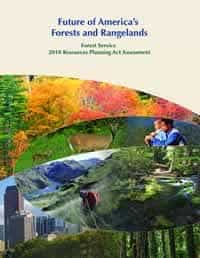
Earlier this week I gave a 60-minute talk to a meeting of the Alsea Watershed Council, my “home group,” where I have been giving presentations every few years since they first formed in the 1980s. The audience was a little smaller than usual, but all of the old-timers were there and Elmer Ostling’s wife had baked delicious cinnamon rolls for everyone.
The theme of my talk was to discuss scientific and political “transparency” in this age of Internet communications – and to use the recently completed website report, Oregon Websites and Watershed Project’s (ORWW) “Coquelle Trails,” as a model and framework for the discussion. The Coquelle Trails project covered more than 1,400,000-acres in southwest Oregon, including sizable portions of BLM and USFS lands and hundreds of thousands of acres of marbled murrelet, spotted owl, coho, California condor, wolf, and elk habitat. PowerPoint and PDF versions of the presentation have been put online here:
www.NWMapsCo.com/ZybachB/Presentations/2010-2013/index.html#20130221
The original 2-page Press Release for Coquelle Trails was used as a handout. The online version of the handout can be found here:
www.ORWW.org/Coquelle_Trails/Press_Release_20130107.html
The discussion was arranged in four parts: 1) a proposed definition of “scientific and political transparency” — at least as it should apply to taxpayer-funded research — for the 21st century; 2) a demonstration of how inexpensive and easy it is to produce baseline data in modern digital formats, by using the Coquelle Trails’ predictive map construction and field verification methodology as an illustration; 3) a brief overview of how the Coquelle Trails’ historical datasets and current findings were formatted for Internet access by using the same standards developed by ORWW with Siletz School 2nd-Grade students 15 years ago; and 4) basic conclusions regarding current opportunities and needs to create better trust and transparency between federal land management agencies and local communities via enhanced research methods and internet communications.
After a brief introduction and background regarding the focus of my talk and the reference materials we would be using, we began with the proposed definition for “Scientific (& Political) Transparency: 2013,” which was also outlined in four parts:
1. Plain English
Acronyms + Jargon + Latin + Metrics x Statistics = Total Obfuscation
Doug Fir vs. Doug-fir vs. PsMe
TMDL vs. turbidity vs. muddy water
2. Research Methodology
A. All taxpayer-funded work is documented.
B. All documentation is made readily available via public websites.
C. Most work is subject to Independent Peer Review.
D. All peer reviews and resulting discussions are made publicly available.
3. Direct Access to all taxpayer-funded research, meetings, reports, correspondence, political decisions, etc.
4. Stable, well-designed (dependable, comprehensive & “easy to use”) Websites: ORWW Coquelle Trails as a model.
The opening discussion of Plain English was illustrated with a philosophical approach as to how Latin had been used to create distance between the Messengers of God and the illiterate masses in the Middle Ages, and how that process was still being used today – via government acronyms, professional jargon, metrics, and obscure statistics (and Latin) – to create distance between government agencies and the public; between the agencies themselves; and even between different generations of scientists within the same disciplines.
I used personal examples of the “evolution” of Douglas Fir (Pseudotsuga taxifolia) to Douglas-fir (Pseudotsuga menziesii) to PsMe (“Piz-Me”) in the agencies and classrooms during the past 60 years – while everyone in town and at the sawmills continued to call it “Doug Fir.” The similar history of TMDL – and why that acronym is not a good fit to discuss with current grade school and high school students – was another example. Same with metrics: the USFS and BLM are US agencies. Our standard of measure, used by all taxpayers, is the English system (chains, links, feet, miles, and acres) — why then do agency personnel try and talk and write in terms of hectares and kilometers in official reports and public presentations (rhetorical question)?
The second part of the discussion involved a series of slides showing how traditional archival research methods and modern technology were used during the Coquelle Trails project to achieve desired results. This was, essentially, a summary of the methodology as described and illustrated by the online report:
www.ORWW.org/Coquelle_Trails/Methodology/
Part three of the discussion used a series of slides showing how ORWW has continued to use the same methods and formats developed with Siletz 2nd-Graders in 1998 to present Coquelle Trails research datasets, findings, and conclusions to the present day:
www.ORWW.org/PEAS/SZDay/SalmonCycle/
www.ORWW.org/Coquelle_Trails/Maps_1856-2012
The point was made – pointedly – that government websites to the present time continue to be far less stable, far less comprehensive, and much more difficult to navigate than methods developed by grade-schoolers during the past century – during the very infancy of the Internet. Also, that the more accessible and reliable design was developed and has been expanded and maintained by a tiny non-profit in Philomath, Oregon, entirely funded by local residents, businesses, and organizations – and no federal dollars. And that those works have been continuously available and online for more than 16 years (compare to the life of an average government link or URL).
Which brought us to the Conclusions, also listed in four parts:
Conclusions: How Transparency Saves Money & Improves Decision Making
1. The 1976 Paperwork Reduction Act and the 2010 Plain Writing Act already require the use of Plain English by federal agencies. These acts simply need to be enforced.
2. Modern technology makes automated scanning of documents and GPS-referenced digital photography increasingly cheap and easy. Citizens should insist on such documentation and direct access to all taxpayer-funded research, meetings, etc., affecting local regulations.
3. High-speed Internet communications and the recent proliferation of ipads and smart phones has made universal access to technical information possible, with few limitations to time and location.
4. Increased access to better information is believed to result in improved research, discussion, and decision-making. Stable, well-designed websites make such access possible for almost all citizens, including: students, teachers, scientists, politicians and public resource managers.
So that was my presentation. I would be very interested in other thoughts on this. I think the current lack of transparency in government and in science (and maybe particularly in government-funded science) is doing a great disservice to taxpaying citizens, our voters, and our students and teachers, all of whom deserve clear and complete answers to their questions and requests.
Modern technology and Internet communications have made sharing information more possible, cheaper, and easier than at any other time in history – so why does the government (and its scientists) continue to hide behind secret meetings, foreign languages and measurements, unavailable “findings,” clunky and outdated communications, never-ending acronyms, and other forms of deliberate obfuscation? That’s a rhetorical question with lots of answers, but the bottom line is that there is really no excuse for allowing this type of behavior to continue. It’s way too expensive, totally unnecessary, probably unethical, and counterproductive to most legitimate workings of government and of science. In my opinion. I’m interested in the thoughts of others.







